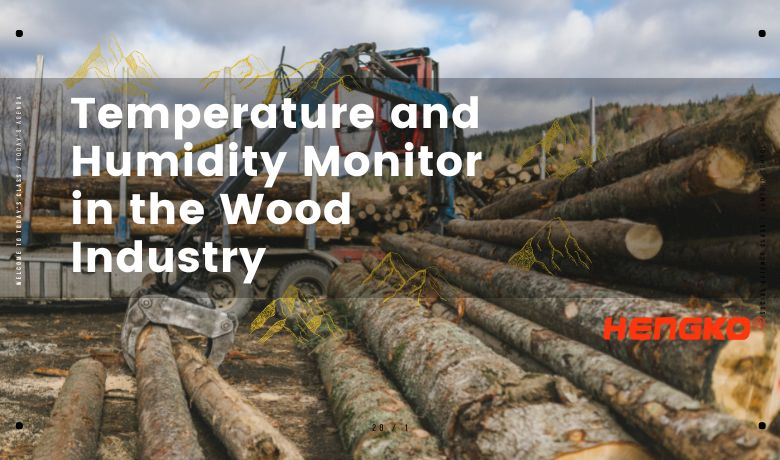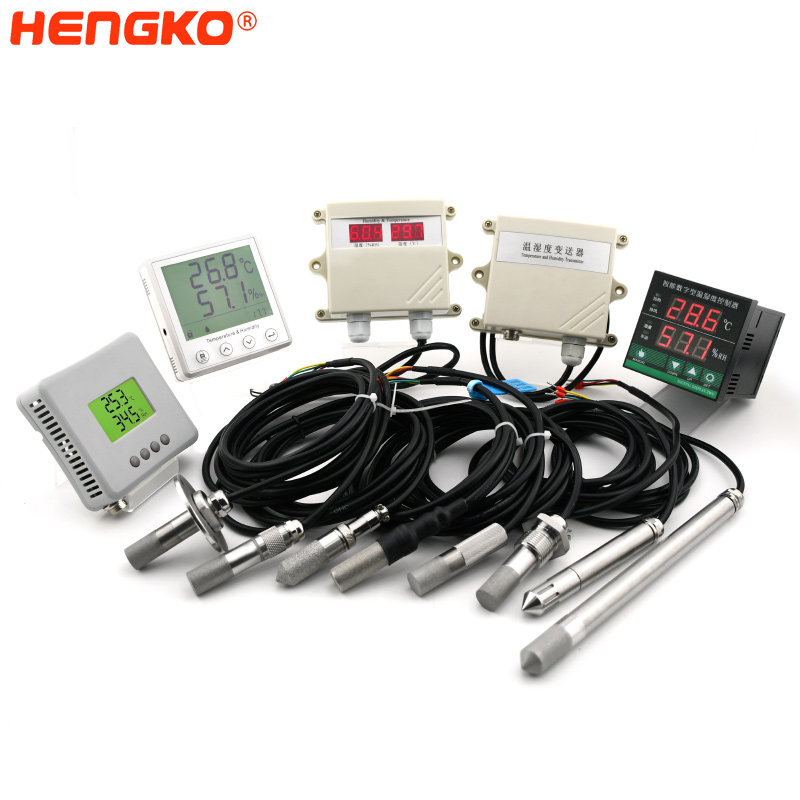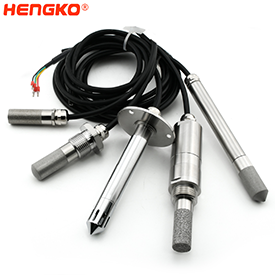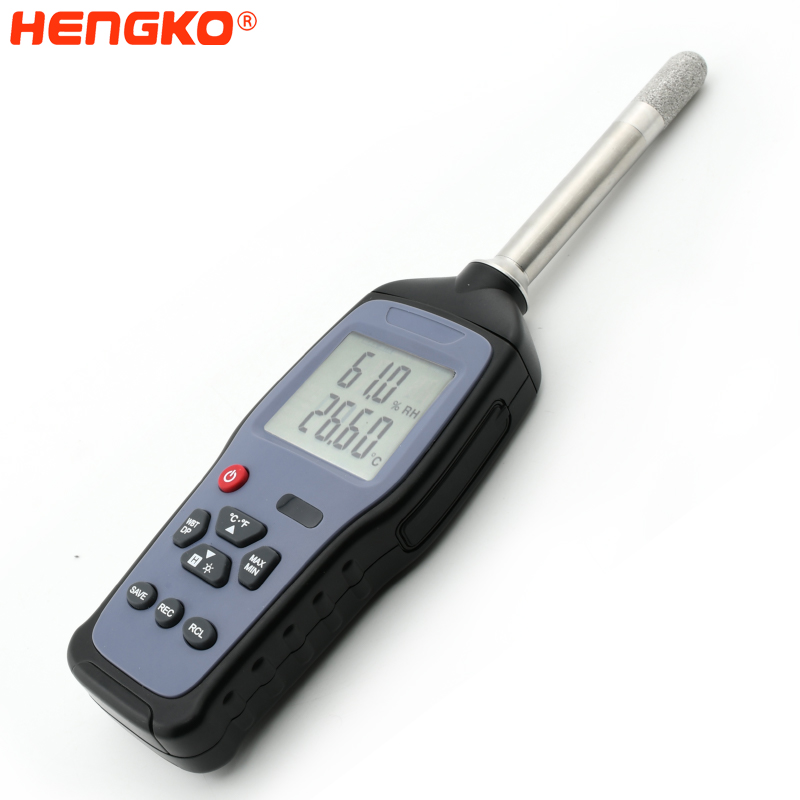
Why it is Important to Do Temperature Humidity Monitor in the Wood Industry?
In short, We hope to know the temperature and humidity data more accurately to determine the time for the next step of wood processing production.
So we need to confirm the confirm the Production time based on the data of the temperature and humidity.
But if you look at it from a product standpoint temperature and humidity monitoring are critical in the wood industry because they directly affect the quality and integrity of wood products.
Wood is a natural, organic material and it can be easily influenced by changes in environmental conditions, including temperature and humidity. Here are some reasons why it is important to monitor temperature and humidity in the wood industry:
1. Prevent Spoilage:
Temperature and humidity monitor can help us to prevent wood from deteriorating, because too dry or too much moisture can cause warping, cracking, splitting, and decay. These issues can decrease the quality of the wood, making it unsuitable for use in high-end applications.
2. Ensure Product Quality:
According to the habits of different woods, scientifically monitor and control the temperature and humidity of the environment, so that the wood raw materials are stored in a suitable environment is the premise of maintaining the quality of wood.
So Proper temperature and humidity control can help maintain the quality of wood products, including their appearance, strength, and durability. This is particularly important for high-end products that need to meet stringent quality standards.
3. Increasing Productivity:
Temperature and humidity monitoring can help increase productivity by reducing the risk of product defects, special of the qualtiy of the wooden, The quality of the wooden can lead to costly rework and delays in production schedules. So now we can monitor and control the temperature and humidity of the environment through scientific methods, so that the wood raw materials can maintain the quality suitable for production and processing before production.
4. Preventing Mold and Fungal Growth:
As we Know, High humidity levels can create conditions that promote mold and fungal growth, It can damage wood products and potentially pose health risks to workers. So Temperature and humidity monitoring can help prevent these issues by identifying and correcting high humidity levels before they cause damage.
5. Ensuring Customer Satisfaction:
Temperature and humidity control can directly help ensure customer satisfaction by delivering high-quality wood products. because as a good supplier to supply quality wooden that meet their specifications and expectations, can help us to repeat business and positive word-of-mouth referrals.
In summary, temperature and humidity monitoring is critical important in the wood industry because it can help us to prevent deterioration, maintain product quality, increase productivity, comply with regulations, and ensure customer satisfaction.
From felling, transportation, and reprocessing of trees, the influencing factor of temperature and humidity is always inseparable. Humidity monitoring is very important in wood storage. The process of wood drying is a very strict process that requires accurate monitoring of the environment (most importantly temperature and humidity)
.
Fresh trees are saturated with water, and the size of the wood will gradually shrink over time as the water evaporates. Therefore, a large wood drying kiln needs to be used to remove excess water. During this process, the green wood boards are stacked in the kiln and dried under the circulation of hot air. When wood is heated, moisture is released in the form of steam, which increases the humidity of the kiln. We need to monitor the temperature and humidity with a temperature and humidity sensor.
How to do Temperature Humidity Monitor in the Wood Industry ?
Creating a Temperature Humidity Monitor for the Wood Industry can help ensure the quality and safety of wood products by controlling the environmental conditions during storage and production. Here's a step-by-step guide on how to set up a basic temperature and humidity monitoring system:
1. Select the Right Sensors:
Choose temperature and humidity sensors suitable for the wood industry. Look for sensors that are accurate, reliable, and designed to operate in the specific environmental conditions of the wood storage or production area.
2. Choose a Microcontroller or IoT Platform:
Select a microcontroller (e.g., Arduino, Raspberry Pi) or an IoT platform (e.g., Particle, ESP8266) to connect the sensors and process the data. The choice depends on the complexity of the monitoring system and the level of data processing required.
3. Connect Sensors to the Microcontroller/IoT Platform:
Follow the manufacturer's instructions to connect the temperature and humidity sensors to the microcontroller or IoT platform. Ensure that the connections are secure and accurate readings are obtained.
4. Write Code:
Develop the necessary code to read data from the sensors. Depending on the platform, you may need to install relevant libraries or packages to interface with the sensors. The code should include instructions for data logging and, if applicable, data transmission.
5. Data Logging and Storage:
Implement a data logging mechanism in the code to record the temperature and humidity readings at regular intervals. You can store the data locally on an SD card or external memory or use cloud storage for easy accessibility and backup.
6. Data Visualization and Analysis:
If you are using an IoT platform, you may have built-in data visualization and analysis tools. Otherwise, you can set up a dashboard using tools like Grafana or ThingsBoard to monitor the temperature and humidity trends over time.
7. Alerting System:
Implement an alerting system to notify relevant personnel when the temperature or humidity goes beyond acceptable thresholds. This will allow for timely intervention to prevent potential damage to the wood products.
8. Power Source and Enclosure:
Ensure the monitoring system is powered appropriately, considering whether it's battery-operated or connected to a power source. Also, enclose the system in a protective case to shield it from environmental factors.
9. Placement of Sensors:
Position the sensors strategically within the wood storage or production area to get representative readings. Avoid placing them in direct sunlight or near heating/cooling sources that could skew the measurements.
10. Calibration and Maintenance:
Periodically calibrate the sensors to ensure accuracy. Regular maintenance checks should be performed to ensure the system is functioning correctly.
11. Data Access Control:
If the monitoring system is part of a larger network, implement access controls and encryption to protect the data from unauthorized access.
12. Documentation and Training:
Document the setup process, including wiring diagrams, code explanations, and maintenance procedures. Provide training to the relevant personnel responsible for monitoring and maintaining the system.
By following these steps, you can create a Temperature Humidity Monitor in the Wood Industry that helps optimize production conditions, prevent material damage, and ensure product quality meets industry standards.
How to Choose Right Temperature and Humidity Sensor for Wood Industry ?
Choosing the right temperature and humidity sensor for the wood industry is crucial to ensure accurate and reliable monitoring of environmental conditions. Here are some factors to consider when making your selection:
1. Accuracy and Precision:
Look for sensors that offer high accuracy and precision in temperature and humidity measurements. The wood industry requires precise monitoring to prevent damage to the wood products due to fluctuations in environmental conditions.
2. Operating Range:
Consider the temperature and humidity range in which the sensor can operate effectively. Ensure that the sensor can handle the specific temperature and humidity levels typically encountered in your wood storage or production facilities.
3. Response Time:
The sensor's response time is essential, especially if rapid changes in temperature and humidity can occur in your wood industry setting. A quick response time will provide real-time data and help you take immediate action if necessary.
4. Durability and Reliability:
Opt for sensors that are built to withstand the environmental conditions of the wood industry. The sensors should be durable, resistant to dust, moisture, and other potential contaminants that may be present in the wood storage or production areas.
5. Calibration and Maintenance:
Check whether the sensor requires frequent calibration and maintenance. Sensors that retain accuracy over an extended period or have self-calibrating capabilities will save you time and effort in maintenance.
6. Output and Connectivity:
Determine the type of output the sensor provides, such as analog or digital, and ensure compatibility with your data logging or monitoring system. Additionally, consider whether the sensor supports wired or wireless connectivity options based on your setup requirements.
7. Power Consumption:
For battery-operated systems, choose sensors with low power consumption to extend the sensor's operational life and reduce the frequency of battery changes.
8. Cost-Effectiveness:
Compare the cost of different sensors while keeping in mind the required features and performance. Strike a balance between quality and affordability to meet your budget constraints.
9. Certifications and Standards:
Check if the sensor complies with industry standards and certifications, which may be relevant to the wood industry or any specific regulations in your region.
10. Vendor Reputation and Support:
Research the reputation of the sensor manufacturer or vendor. Choose a reliable company that offers good technical support and responsive customer service.
11. User Reviews and Recommendations:
Look for user reviews and recommendations from other professionals in the wood industry who have used the sensor. Their experiences can provide valuable insights into the sensor's performance and suitability for your needs.
12. Scalability and Expandability:
If you plan to expand your monitoring system in the future, consider whether the sensor can be easily integrated into a larger network or connected with additional sensors for a comprehensive monitoring setup.
By carefully considering these factors, you can make an informed decision and select the right temperature and humidity sensor
for your wood industry application, ensuring optimal environmental conditions and preserving the quality of your wood products.
HENGKO industrial HT802 series temperature and humidity transmitter is special designed for the industrial environment,
The sensor can be fixed on the wall of wood drying kiln for long-term monitoring of temperature and humidity data.
Main Feature:
Accurate measurement
Widely application
Shock resistant
Low drift
RS485,4-20Ma output
With/without display
Our humidity detector is widely used in HVAC, clean engineering, electronic workshop, flower greenhouse, agricultural greenhouse, meteorological equipment, subway tunnel and other fields, industrial drying and other fields .
HENGKO stainless steel humidity sensor enclosureis corrosion-resistant and high-pressure resistant.
It can be used in high temperature and high humidity environment. With various types relative humidity sensor probe, OEM also available.
As time goes by, the moisture content in the wood decreases, and the total humidity in the air decreases accordingly. When the temperature and humidity sensor detects the proper humidity, the wood can be removed from the kiln. During the drying process, some water vapor and other compounds (such as acid and grease) are volatilized due to transpiration, which will easily remain on the transmitter and affect the accuracy of the reading. Therefore, regular calibrating the temperature and humidity transmitter is necessary. HENGKO calibrated temperature and humidity meter adopts RHT series chip, the accuracy is ±2%RH at 25℃ 20%RH, 40%RH and 60%RH. Such a high precision so that the product can read and calibrate the temperature and humidity instrument data in a certain area, and carry out further data correction, convenient and fast.
For any inquiries or to get in touch with HENGKO, please feel free to contact us via email at ka@hengko.com.
We are here to assist you with any questions or information you may need. Looking forward to hearing from you!
Post time: Dec-07-2021









